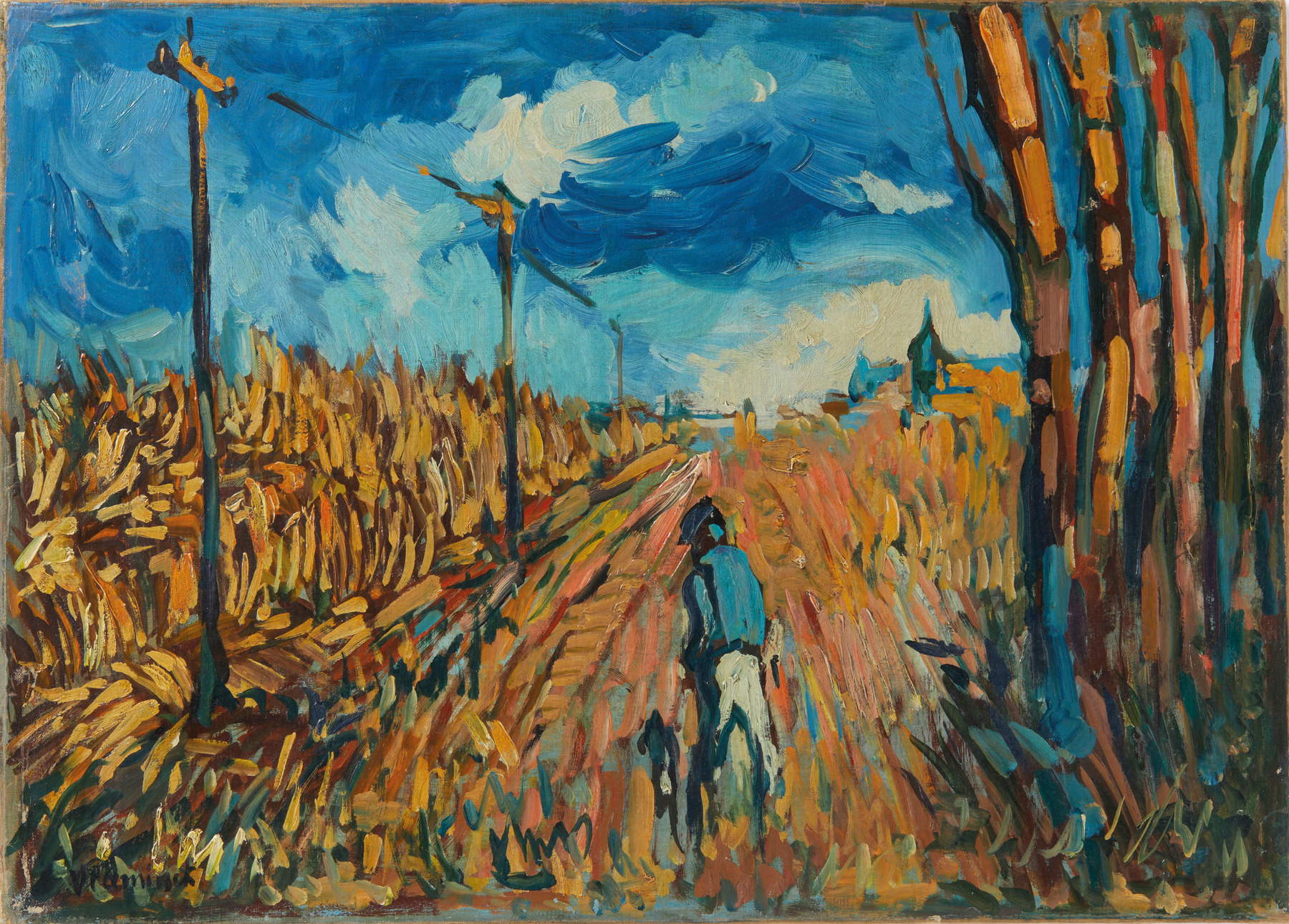A masterpiece thought to be lost, signed by one of the greatest protagonists of European Fauvism, surprisingly resurfaces in Italy. On Thursday, June 26, 2025, the Capitolium Art auction house in Brescia will present to the public and auction an unpublished work by Maurice de Vlaminck (Paris, 1876 - Rueil-la-Gadelière, 1958), Champ de Blé, dated around 1906. The discovery of the canvas, which has been missing for decades and is considered missing by the scientific community, is an event of definite significance.
The painting will be on preview display on Monday, June 23 and Tuesday, June 24 at the Palazzo Cigola Fenaroli Valotti headquarters, 55 Cattaneo Street, with hours 10 a.m.-1 p.m. and 3:30-6:30 p.m. This is an opportunity to admire up close a work that belongs to the most explosive and iconoclastic period of Fauvism, a movement that marked a clean break with 19th-century art and paved the way for expressionism and modern art tout court. The estimate assigned to the work is between 30,000 and 40,000 euros. The auction base is set at 15,000 euros. It is not uncommon for works of this caliber, given up for lost and suddenly resurfacing, to stir up surprising market dynamics. Original and certified fauve paintings are rare, even more so if they can be traced back to the movement’s peak creative energy.

Champ de Blé was known only through a black-and-white photograph archived in 1973 by the Wildenstein Institute in New York. Even then the work was untraceable. Now, thanks to the research and attribution work done by Capitolium Art experts, it has been possible to reconstruct its historical path.
Investigations show that the work, painted in France in 1906, immediately entered a private U.S. collection. In the early 1970s it was moved to Italy, to Milan, where it would remain for more than half a century in a private collection, invisible to the public and scholars. Only recently, thanks to the flair and expertise of the team led by the Rusconi family, has it been re-identified and authenticated.

The painting fits fully into the most fauve moment of de Vlaminck’s production, a period in which color and painterly gesture reached unprecedented levels of expressive power. The palette is dominated by bright yellows, glowing reds, electric blues, and vibrant oranges, in a riot of pure hues that directly recall the pictorial language of the early twentieth-century Salon d’Automne.
The work’s date, 1906, is significant. It comes just a year after the famous 1905 edition of the Salon d’Automne, which consecrated the movement and baptized, almost in mockery, its protagonists with the famous nickname Les Fauves. Indeed, it was critic Louis Vauxcelles, struck by the contrast between a classical sculpture and the savage canvases on display in Room 7, who spoke of “a Donatello among ferocious beasts.” The term, which originated as an insult, was proudly adopted by de Vlaminck, Derain and Matisse.

De Vlaminck fully embodied the rebellious and iconoclastic spirit of Fauvism. Self-taught, violent in line and spirit, he saw painting as a means of breaking conventions. In one of his writings, he defined his own work as “a bomb” thrown against academicism: “I fulfilled my will to destroy the old conventions, to disobey...what I could not have done except by throwing a bomb, I thought of accomplishing with painting, using pure color to the utmost.”
Champ de Blé is exactly that: a visual detonation, a rural landscape transformed into color energy. The subject, a wheat field, is a clear homage to Van Gogh, whom Vlaminck discovered in 1901 thanks to the retrospective organized by the Bernheim-Jeune gallery. It was an electrocution. The Dutchman’s emotional intensity became a constant in Vlaminck’s painting from then on, as he saw him as the spiritual father of his language.
It is no accident that the subject of the rediscovered work so directly evokes the Dutch master’s celebrated golden expanses. But in Champ de Blé the reworking is total. There is no pacification in nature, but rather an expressive tension that leads the landscape to vibrate, to tear itself apart. The brushstroke is furious, instinctive. The color becomes body, emotion, breath.
The canvas can be considered a kind of artistic statement of intent. In it coexist tribute and challenge, memory and rupture, admiration and overcoming. A silent but very intense dialogue with Van Gogh, transformed into fauve matter. André Derain himself, de Vlaminck’s partner in pictorial adventures, used to define colors as “cartridges of dynamite”: nothing could be truer, observing the work that Capitolium Art will bring to auction.
With this find, Capitolium Art not only contributes to the enhancement of international artistic heritage, but also demonstrates how the art market can still be a place of discovery, rediscovery, and excitement. “Champ de Blé” is not only a fauve work: it is a living testimony to that desire to disobey that, even today, remains the beating soul of art.
 |
| A lost Vlaminck resurfaces: fauve masterpiece to be auctioned at Capitolium Art in Brescia, Italy |
Warning: the translation into English of the original Italian article was created using automatic tools. We undertake to review all articles, but we do not guarantee the total absence of inaccuracies in the translation due to the program. You can find the original by clicking on the ITA button. If you find any mistake,please contact us.